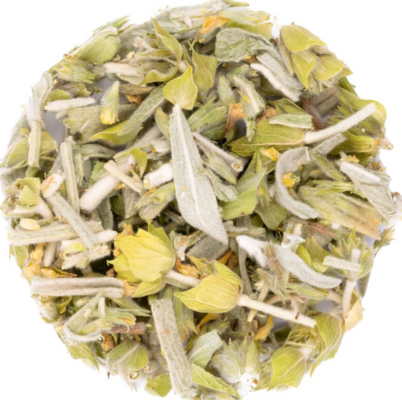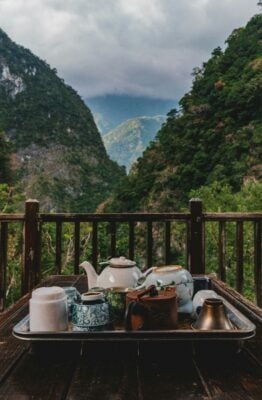Stories About Tea welcomes a new international guest writer, who will contribute once a month! Meet Simona Zavadckyte from Global Japanese Tea Association. Japanese tea is quite unique when you look around the tea regions of the world. Its production differs from that of other countries.”
Who are you and what do you do within the tea industry?
My name is Simona Zavadckyte and I am the president of the Global Japanese Tea Association. My work is focused on making Japanese tea more open and accessible to the world.

When did your passion for tea start and how?
Tea has always been a part of my life. Drinking tea was common in my family and I remember it from early days. The love for Japanese tea specifically started over 10 years ago, when my Japanese friends at the university made some Matcha they had brought from home. Since then Japanese tea has captured my curiosity and I have always wanted to delve deeper.
Can you tell what you do at the Global Japanese Tea Association?
The Global Japanese Tea Association was created to connect all Japanese tea lovers, from tea growers and producers to tea sellers and tea drinkers. Japanese tea has been becoming more popular around the world, but not many people know where to find it, or how to learn more about it. Our key activities include sharing current information about Japanese tea, as well as providing opportunities to learn about it more deeply. We organize courses both in Japan, the Japanese Tea Master Course , and various countries around the world with the Japanese Tea Foundation Course. Through our membership program we are also creating a community of tea lovers, where people can connect with each other and collaborate.
How did the Global Japanese Tea Association start and how big are you now?
The association was established one year ago – on 31st January, 2019. Within the past year we have worked hard on making Japanese tea more accessible to the world, by providing information about it in various languages and creating opportunities to learn about it around the world. The association is constantly growing and we are excited to see what the future will bring.
Can you describe what is so special about Japanese tea?
Japanese tea is quite unique when you look around the tea regions of the world. Its production differs from that of other countries. Japan mostly makes green tea and the first step, unique to Japan, is steaming, due to which the brews of Japanese tea tend to be full-bodied and thick. Shading is also a common practice for high grade Japanese teas, that gives a rich umami taste. All in all, Japanese tea provides rich vegetal flavors hard to find in other tea regions.
What are the standout Japanese teas and why?
Japan produces a variety of teas. None could dare to exclude Matcha. Strongly embedded in Japanese culture it is probably the most popular Japanese tea in the world today. Its unique appearance and taste makes it stand out from the rest.
I would also like to mention Hojicha. It is a rather casual tea in Japan, and the first one you will meet regardless if you go to a café or someone’s house. Hojicha tea leaves are roasted over high heat and because of that they gain a dark brown color. The brew is very light and refreshing, often with the notes of chocolate or vanilla. Hojicha is especially enjoyable as a cold brew.
A rarer tea worth mentioning would be Wakoucha, or Japanese black tea. Over 96% of tea in Japan is green, so finding Wakoucha is not that easy. But if you are lucky, it is a wonderful tea. Produced from tea leaves intended for green tea, it is lighter and naturally sweeter than black teas from other tea regions; and minutes after drinking it you can still feel the lingering notes of honey.

When did tea become a customary drink in Japan and how?
Tea has a long history in Japan (over 1200 years according to historic sources). At first it was consumed only in the higher layers of society. The production of loose-leaf tea – Sencha in 18th century was one of the turning points. And even more so was the introduction of machinery in tea production in late 19th century. This reduced the cost of tea production and made it accessible to the wider society.
What is your personal favorite tea and why?
With the huge variety of tea in the world this is probably the hardest question for any tea lover. Rather than choosing one specific tea, for me personally there is one tea for every occasion. In the morning I enjoy summer grown Wakoucha. Open-field Sencha form the spring season goes well with lunch. At 3pm or 4pm when the energy dips, there is nothing better than a warm bowl of Matcha. And in the evening a light and refreshing Hojicha is my natural choice.
Is there a favorite food pairing with a tea you would like to recommend?
I guess my look at tea and food pairing is a more traditional one. I enjoy the combination of Japanese teas and traditional Japanese sweets. A bowl of Matcha with a sakura mochi or ichigo daifuku is just irresistible.
What is the tea culture like in Japan?
The question begs for its own article – it is hard to summarize in just a few sentences. In broad strokes the tea culture in Japan has a long history and deep roots. The tea ceremony, that everyone recognizes to be part of Japanese culture, has developed over 400 years ago; and it continues to be practiced within the deeper layers of the society today. In everyday life too, even if somewhat out of focus, tea is always present. In the past many people would keep a Japanese teapot – kyusu and brew tea to their guests. In current times that is somewhat taken over by the convenience of the bottled tea. You may also notice that these days in Japan tea is not only a drink, but also an ingredient. Many cafes serve Matcha ice-cream or other tea infused deserts. While constantly changing and transforming tea continues to be part of the daily life in Japan.



